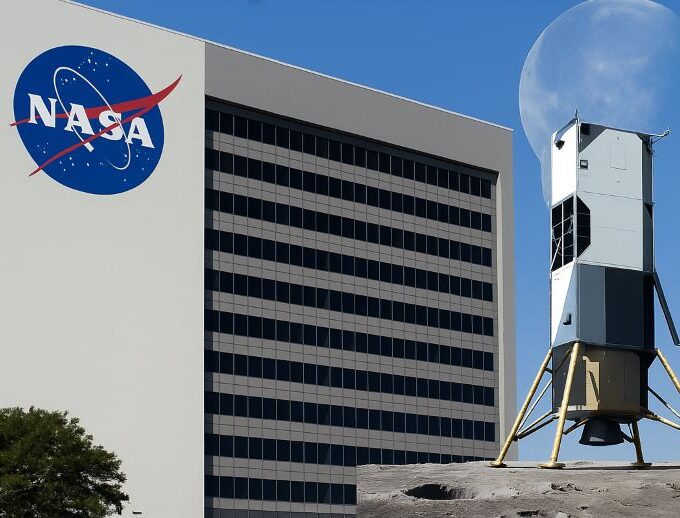Against the backdrop of the increasingly fierce global space race, the United States has taken another crucial step forward. In August 2025, Sean Duffy, the acting administrator of NASA and a former Congressman from Seattle, announced that the US government plans to build the first nuclear reactor on the moon by 2030 at the latest, providing stable energy support for future long-term lunar stays and Mars missions.
According to a report by Politico on August 4th, the project requires the selection of a suitable contractor from private space enterprises within 60 days and the appointment of a general project leader. The expected power of this reactor is 100 kilowatts, which can meet the power demand of the lunar surface base and lay a solid foundation for subsequent deep space exploration missions.
Reboot the dream of nuclear energy in space
NASA launched the “Fission Surface Power” project as early as 2022 and initially developed a model of a 40-kilowatt lunar nuclear reactor. The new plan nowadays not only enhances the output power but also sets the timetable before 2030, demonstrating the high regard of the Biden administration and NASA for the plan to return to the moon.
According to The New York Post, Duffy emphasized: “If we do not deploy energy infrastructure on the moon, other countries will take the lead and may restrict our access.” The “other countries” he referred to clearly include China and Russia, which have been making rapid progress in space station, lunar exploration, Mars exploration, and other projects in recent years.
Space version of energy diplomacy
Analysts point out that this nuclear reactor project is not only part of NASA’s science and technology strategy, but also has a strong geopolitical undertone. Deploying nuclear power plants on the moon is equivalent to building a space energy hub. It can not only provide power for lunar surface exploration, scientific research experiments, and robot operations, but also may offer power support for future “lunar mining” and “lunar Internet” construction.
The Center for Strategic and International Studies (CSIS) of the United States analyzed that having control over space energy is equivalent to having control over the operation of space infrastructure. In the long run, it will play a decisive role in the “space trade channel” and the “development of resources in the South Pole of the moon”. Especially against the backdrop of the continuous advancement of the Artemis program, NASA urgently needs an energy system that can operate stably in extreme environments.

Private enterprises are competing for large orders
At present, many enterprises have shown a strong interest in this project, including BWX Technologies, which provides shipborne nuclear reactors for the US Navy. Influenced by this positive news, the company’s share price has risen by more than 12% recently, and the market generally believes that it is expected to become one of the main contractors of NASA’s project.
Apart from BWX, Lockheed Martin, Boeing, SpaceX, and others may also participate in the bidding. This will be a model of high-tech cooperation led by the government and participated in by private enterprises.
Technical and ethical challenges coexist
However, the outside world has also raised many doubts about this plan. First, from a technical perspective: Currently, most of the small nuclear reactors on Earth still need to be equipped with cooling systems and radiation protection facilities, while challenges such as the temperature difference, strong radiation, and vacuum environment on the lunar surface remain to be addressed.
Secondly, there is the issue of ethics: Some environmental organizations and space ethics scholars have warned that the promotion of nuclear energy in space may trigger a new round of disputes over “resource colonization” and “orbital pollution”. They are worried that if humans rush to extend nuclear waste into outer space before the problem of nuclear waste on Earth is properly solved, it might pose even greater risks.
The starting point of the “Interstellar Energy Revolution”?
Despite continuous controversies, this plan undoubtedly marks an important step forward for humanity’s sustainable presence in space. Insiders from NASA disclosed that in the future, the Mars program will also deploy nuclear power systems in the model of lunar reactors to ensure that the energy supply can still be maintained on the Martian surface, far from solar energy shortages.
Alan Stern, the former chief scientist of NASA, said, “This is not only part of the lunar program, but also the starting point of the interstellar energy revolution.” Whoever can deploy the energy network first will have the initiative to establish a “space civilization”.
Conclusion
From the “Star Wars” concept during the Cold War to the gradually implemented “nuclear moon landing” nowadays, the United States’ space strategy is moving towards a more complex and far-reaching direction. The advancement of the nuclear reactor program is both a technical challenge and a political declaration. In 2030, perhaps we will truly witness humanity lighting the “nuclear lamp” for the first time on the moon.













I really appreciate content like this—it’s clear, informative, and actually helpful. Definitely worth reading!